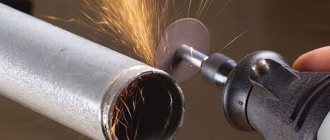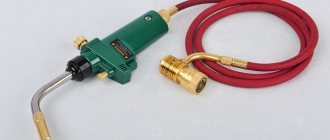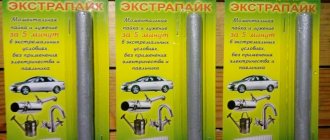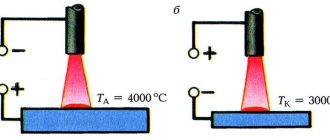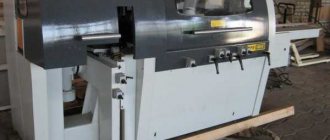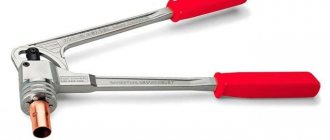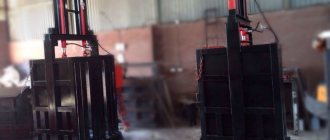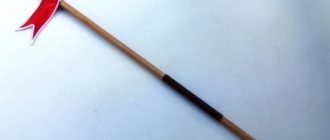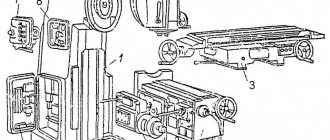The soldering process involves joining different metal parts by filling the space between them with molten metal. This is accompanied by the application of flux to the mating surfaces. Removing the oxide film, better spreading of solder over the surface of the mating parts and better quality of their connection - this is why the auxiliary material flux is needed when soldering.
Purpose of the material
The purpose of fluxes is to prepare parts for soldering, clean surfaces from fats and salts, protect solder from oxidation during the soldering process and facilitate its better spreading over the surface. When soldering, flux extends the service life of connections, as it protects soldering areas from oxidation and destruction. The flux should be characterized by a low melting point and low specific gravity. Then it will have time to dissolve the oxides, but will not penetrate deep into the soldering joint. Good fluxes should not evaporate when heated and cause corrosion. They can be easily removed from parts.
What are soldering fluxes used for?
Nevertheless, the importance of the role of rosin, like any other fluxes (which will be discussed later), is that it prepares the parts for reliable connection with each other, cleaning their surfaces from oxide film, salts and fats that prevent contact of surfaces. The purpose of flux is also to reduce the surface tension in the solder substance, which ensures its better fluidity. Thanks to this, it spreads over the largest possible space, increasing the contact area of the elements being soldered. In addition, fluxes extend their service life by protecting parts at soldering points from the formation of new oxides and salts. True, some of them, without proper neutralization, can cause premature failure of parts. Therefore, you must strictly follow the instructions for using this or that composition.
Classification of fluxes
Fluxes vary in the degree of their effect on the workpieces. When soldering, the following types of auxiliary materials are used:
Active fluxes. These auxiliary substances actively interact with the metals being joined. Depending on the materials being joined and their properties, the following types are used:
- Containing dilute hydrochloric acid. Used for soldering zinc and galvanized metals. After soldering, the parts must be cleaned to avoid corrosion. Can be washed in warm water.
- Zinc chloride solution (etched hydrochloric acid). Used for soldering copper, copper alloys and steel.
- Zinc ammonium chloride. It is obtained by adding ammonium to a solution of zinc chloride. Ammonium increases the activity of the auxiliary material and lowers its melting point.
Acidic compounds are chemically active. After their use, neutralization is required. Another property of these compositions is high electrical conductivity, and therefore they are unsuitable for use in electrical engineering.
Acid-free. They are also called inactive. They interact only with the solder, and not with the parts being joined. These include rosin. This is a resin from coniferous trees that has undergone special treatment. It looks like glassy pieces of yellow color, reminiscent of amber. Contains a low amount of fatty acids and does not corrode contacts unless completely removed after soldering. Used for soldering copper, silver, brass, gold. Inactive fluxes also include substances made from rosin with the addition of alcohol, glycerin, and turpentine.
Anti-corrosion. Used to clean the surfaces of connected parts from corrosion. Subsequently, a protective layer should form on the parts to prevent oxidation. The composition of these compounds necessarily includes orthophosphoric acid.
Protective. This includes substances intended only to protect the connection. This can be petroleum jelly, wax or mineral oils. You can apply liquid flux with a cotton swab or brush. For convenience, you can purchase a “flux applicator”.
Excipients are characterized by differences in consistency. They are:
- liquid;
- hard;
- pasty.
Liquid ones are used in hard-to-reach places. Paste-like ones are most convenient to use. They are easy to apply.
Another distinguishing feature of different types of fluxes is the melting point. Low-temperature ones melt at temperatures less than 450 °C, and high-temperature ones have a melting point above 450 °C.
Requirements for auxiliary materials
There are general requirements that apply to all types of excipients. What basic properties should they have:
- The fluidity and viscosity of the composition must be in such a ratio that it is possible to wet the entire surface to be treated without spreading beyond the processing boundaries.
- Fluxes should react only with oxidized films, and not with the parts being connected and solder.
- Flux should have less adhesion than solder.
- The substance must not evaporate or burn out.
- The flux should be easily removed after completion of work.
How to solder with flux: first you need to prepare the parts, then treat them with the material, then heat the parts to the desired temperature and apply solder to the treated area.
Application for various metals
Phosphoric and soldering acids are used for soldering parts made of stainless and alloy steel. Borax is used for soldering cast iron, precious metals, and nickel-cobalt alloys. Borax is often used in the repair of plumbing systems. Soldering fat is used when soldering lead couplings to the lead sheath of a cable. It consists of rosin, animal fat and stearin.
Flux brand FPPU25 is used for tinning and soldering of current-carrying parts made of copper and its alloys. For soldering ferrous metals, the active auxiliary material zinc chloride is used.
If you don’t have ready-made flux on hand, you can use a solution of aspirin tablets in cologne, fruit juice or olive oil instead.
To create a strong solder joint, you need a good soldering iron with a properly selected tip, as well as solder and flux that are suitable for this type of work. Only if these conditions are met can the required connection quality be ensured.
Classification of fluxes and their designation system
Soldering fluxes are substances and compounds used to prevent the formation of an oxide film on the surface of the solder and the soldered material, as well as to remove oxidation products from the soldering zone. The melting point of fluxes is lower than the melting point of solder. Fluxes are used in solid, paste and powder form, as well as in the form of aqueous, alcohol or glycerin solutions.
Fluxes used for soldering are classified according to:
- temperature range of activity;
- nature of the solvent;
- the nature of the activator of the determining action;
- mechanism of action;
- state of aggregation.
Depending on the temperature range of activity, soldering fluxes are divided into:
- low temperature (≤450 °C);
- high temperature (>450 °C).
Based on the nature of the solvent, soldering fluxes are divided into:
- aquatic;
- non-aquatic
According to the nature of the activators of the determining action, low-temperature soldering fluxes are divided into:
- rosin;
- halide;
- hydrazine;
- fluoroborate;
- anilic;
- stearic.
According to the nature of the activators of the determining action, high-temperature soldering fluxes are divided into:
- halide;
- fluoroborate;
- boride-carbon dioxide.
If the flux contains several activators, all activators must be named. For example, rosin-halide, fluoroborate-halide flux.
According to their state of aggregation, soldering fluxes are divided into:
- hard;
- liquid;
- pasty.
Properties of fluxes
The parameters of fluxes for soldering with soft and semi-hard solders are given in table. 1 .
Table 1. Fluxes for soldering with soft and semi-hard solders (electrical standards OAA.614.017-67 and OAA.614.028-68)
| Brand | Purpose | Basic data of fluxes | Cleaning after soldering | |
| Component | Compound, % | |||
| TO | Tinning and soldering of current-carrying parts made of copper and its alloys | Pine rosin | 100 | Not required |
| KSP | Tinning and soldering of current-carrying parts made of copper and its alloys | Pine rosin | 25 | |
| Technical ethyl alcohol grade B | 75 | |||
| FPP | Tinning and soldering of current-carrying parts made of copper and its alloys | Polyester resin grade PA9 | 20-30 | |
| Methyl ethyl ketone or ethyl acetate | 80-70 | |||
| STUZO-12224-61 | Tinning and soldering of current-carrying parts made of copper, nickel and their alloys and parts coated with copper, tin, cadmium, silver and zinc | Pine rosin | 20-35 | A swab or brush soaked in a solvent, such as alcohol |
| Diethylamine hydrochloride | 3-5 | |||
| Triethanolamine | 1-2 | |||
| Technical ethyl alcohol grade B | Rest | |||
| F59АОАА. 614.017-67 | Tinning and soldering of aluminum and AMts alloy with each other and with copper and its alloys | Cadmium borofluoride | 10 | Running hot water or alcohol |
| Zinc borofluoride | 3 | |||
| Ammonium borofluoride | 5 | |||
| Triethanolamine | 82 | |||
| 34A OAA. 614.017-67 | Soldering of aluminum and its alloys (melting point 420 °C) | Cadmium fluoride | 50±6 | Hot then cold running water |
| Lithium chloride | 32±6 | |||
| Zinc chloride | 8±2 | |||
| Sodium fluoride | 10±1 | |||
| LM1 | Tinning and soldering of iron-nickel alloys and stainless steels | Pine rosin | 20-35 | A swab or brush soaked in a solvent, such as alcohol |
| Diethylamine hydrochloride | 3-5 | |||
| Triethanolamine | 1-2 | |||
| Technical ethyl alcohol grade B | Rest | |||
| F38N | Tinning and soldering nichrome to each other and to copper | Diethylamine hydrochloride | 25-30 | Hot water or a brush dipped in alcohol |
| Ethylene glycol | Rest | |||
| Phosphoric acid | 29-25 | |||
The parameters of fluxes for soldering copper and its alloys are given in table. 2 .
Table 2. Fluxes for soldering - composition and methods for removing flux residues
| Brand | Compound | Removing flux residues after soldering | |
| Component | % | ||
| FKSp (FKEt) | Pine rosin | 10-60 | Ethyl alcohol or alcohol-gasoline mixture 1:1 |
| Ethyl alcohol or ethyl acetate | 90-40 | ||
| FCDT | Pine rosin | 10-20 | |
| Dimethylalkylbenzyl ammonium chloride (kitamine AB) | 0,1-3,0 | ||
| Tributyl phosphate | 0,01-0,10 | ||
| Ethyl alcohol or ethyl acetate | 89,89-76,90 | ||
| LTI-120 | Pine rosin | 20-25 | |
| Diethylamine hydrochloride | 3-5 | ||
| Triethanolamine | 1-2 | ||
| Ethanol | 76-68 | ||
| FGSSp | Hydrazine hydrochloride | 2-4 | Hot running water (70±10°C) or alcohol-gasoline mixture 1:1 |
| Ethylene glycol or glycerin | 25-50 | ||
| Ethanol | 73-46 | ||
| FSkSp | Semicarbazide hydrochloride | 2-4 | |
| Ethylene glycol or glycerin | 25050 | ||
| Ethanol | 73-46 | ||
| FSkPs | Semicarbazide hydrochloride | 3-5 | |
| Glycerol | 70-58 | ||
| Polyox-100 or Polyox-115 | 27-37 | ||
| FCS | Salicylic acid | 4,0-4,5 | Alcohol-gasoline mixture 1:1 |
| Triethanolamine | 1,0-1,5 | ||
| Ethanol | 95-94 | ||
| FDGL | Diethylamine hydrochloride | 4-6 | Hot running water (70±10°C) |
| Glycerol | 96-94 | ||
| FCA | Zinc chloride | 45,5 | Hot running water (70±10°C) and neutralizing reagents |
| Ammonium chloride | 9 | ||
| Water | 45,5 | ||
| Zinc oxide hydrate | Before precipitation occurs | ||
| FDFs | Diethylamine hydrochloride | 20-25 | Hot running water (70±10°C) or alcohol-gasoline mixture 1:1 |
| Ethylene glycol | 60-50 | ||
| Phosphoric acid (specific gravity 1.7) | 20-25 | ||
| ZhZ-1-AP | Cylinder oil “52” or “KS-19” | 79-81 | Alcohol-gasoline mixture 1:1, trichlorethylene, acetone |
| Organosilicon liquid PFMS-6 | 16-17 | ||
| Oleic acid | 4,9-1,8 | ||
| Antioxidant NG-2246 | 0,1-0,2 | ||
| ZhZ-2-AP | Cylinder oil “52” or “KS-19” | 58,52-69,75 | |
| Organosilicon liquid PFMS-6 | 21,65-10,66 | ||
| Cottonseed oil | 11,0-10,64 | ||
| Oleic acid | 8,79-9,02 | ||
| Antioxidant NG-2246 | 0,04-0,03 | ||
| 284 | Boric anhydride | 23-27 | Hot running water (70±10°C) and cold running water |
| Potassium fluoride | 33-37 | ||
| Potassium borofluoride-hydrogen | 44-36 | ||
| 209 | Boric anhydride | 33-37 | |
| Potassium fluoride | 40-44 | ||
| Potassium borofluoride-hydrogen | 27-19 | ||
| 200 | Boric anhydride | 70-62 | Hot running water and neutralizing reagents |
| Sodium tetraborate (borax) | 17-21 | ||
| Calcium fluoride | 13-17 | ||
| 34A | Potassium chloride | 56-44 | Hot running water and neutralizing reagents |
| Lithium chloride | 29-35 | ||
| Zinc chloride | 6-10 | ||
| Sodium fluoride | 9-11 | ||
| F370A | Potassium chloride | 51-46 | |
| Lithium chloride | 36-39 | ||
| Sodium chloride | 4-5 | ||
| Cadmium chloride | 9-10 | ||
| 16VK | Sodium chloride | 12 | |
| Potassium chloride | 44 | ||
| Lithium chloride | 34 | ||
| Eutectic (aluminum fluoride – 54%, potassium fluoride – 46%) | 10 | ||
Table 3. Soldering fluxes - the effect of flux residues on insulation and their corrosive effect
| Brand | Effect of flux residues on insulation resistance | Corrosive effect of flux residues | |||
| for copper | for silver plating | on tin-lead coating | for nickel coating | ||
| FKSp (FKEt), FKDT | do not affect | do not provide | |||
| LTI-120, FGSp, FSkSp | reduce | provide | do not provide | ||
| FSkPs | reduce | provide | do not provide | provide | do not provide |
| FCS | reduce | have a weak | do not provide | ||
| FDGL | reduce | provide | have a weak | do not provide | n/a |
| FDFs | reduce | provide | do not provide | do not provide | provide |
| FCA | reduce | provide | |||
| ZhZ-1-AP, ZhZ-2-AP | do not affect | do not provide | — | ||
When soldering copper conductors, as well as grounding conductors to the armor and lead sheath of cables, use a solder paste consisting of the following components (in parts by weight): rosin - 10, animal fat - 3, ammonium chloride - 2, zinc chloride - 1, water or ethyl alcohol (rectified) - 1. Solder paste is often used as a flux according to the following recipe: rosin - 2.5%, lard - 5%, zinc chloride - 20%, ammonium chloride - 2%, technical petroleum jelly - 65.5% , distilled water - 5%.
Parameters of fluxes for soldering and welding of aluminum are given in table. 4 .
Table 4. Fluxes for soldering and welding aluminum
| Brand | Compound, % | Melting point, °C | Application | |||||
| Potassium chloride | Sodium chloride | Lithium chloride | Sodium fluoride | Cryolite grade K-1 | Magnesium chloride | |||
| YOU | 50-55 | 30-35 | — | — | 10—20 | — | 630 | For terminating wires and cables |
| AF-4A | 50 * | 28 | 14 | 8 | — | — | About 600 | Only for connecting cable cores in couplings |
| HP | 50 | — | 30 | — | — | 20 | — | |
